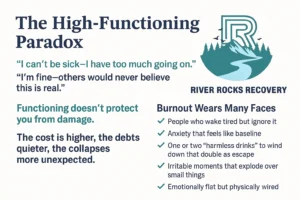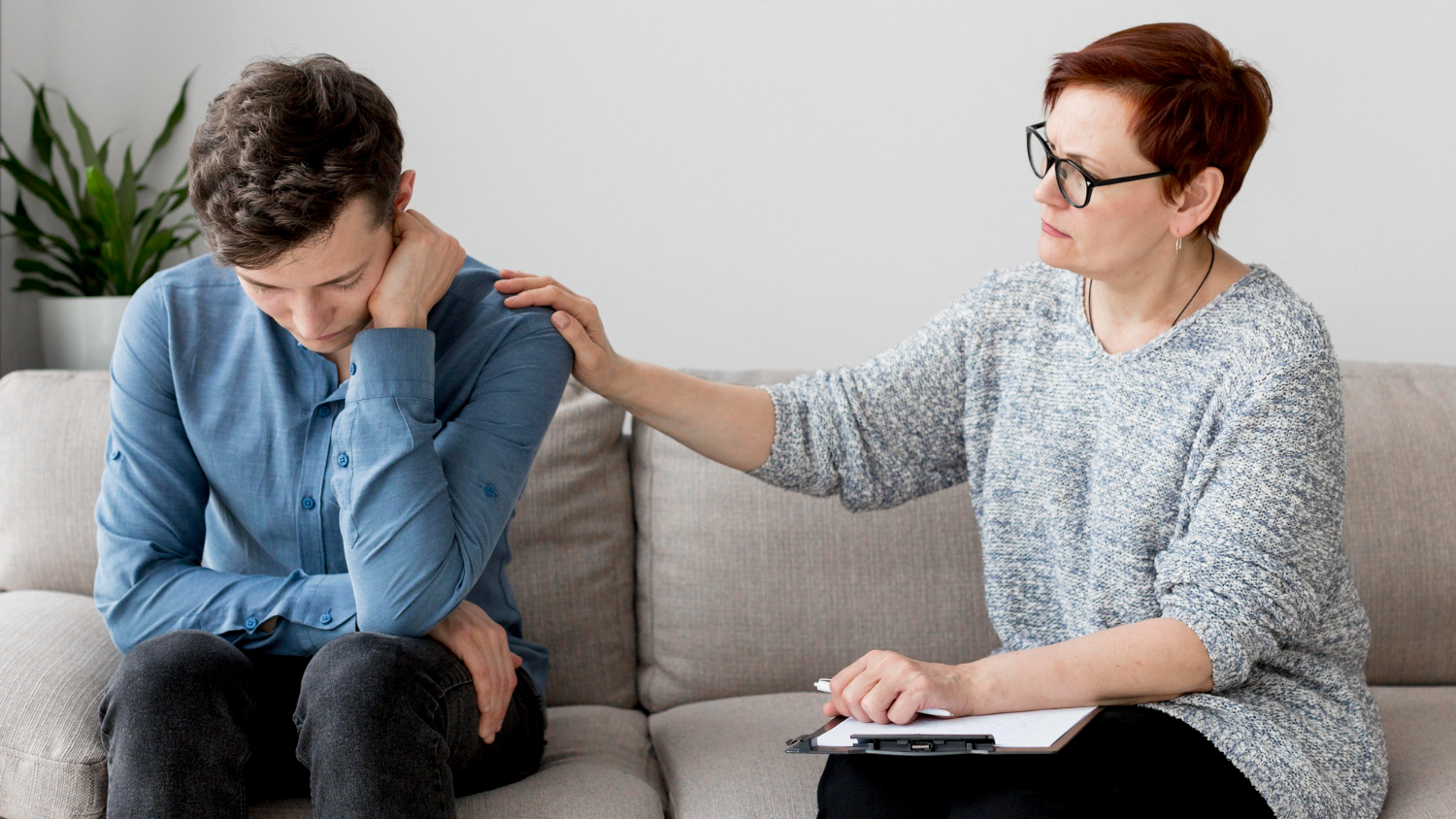Some of the brightest people in my IOP arrive with quiet desperation. On paper: success, responsibility, stability. Behind closed doors: exhaustion, shame, and a drink that’s slipped from occasional to necessary.
At River Rocks Recovery in Middletown, Ohio, our intensive outpatient program is where I see the burnout behind the bottle take shape—and where I see glimpses of what’s possible when someone leans into help.
(By the way, we serve folks from Hamilton, Ohio and in Monroe, Ohio who drive in for the structure they can’t build alone.)
The High-Functioning Paradox
They tell me: “I can’t be sick—I have too much going on.” “I’m fine—others would never believe this is real.”
But functioning doesn’t protect you from damage. If anything, it hides it better. The cost is higher, the debts quieter, the collapses more unexpected.
I see people who do more, take more, push more—and use alcohol like a venting pipe. It doesn’t feel like a problem until the pipe clogs up.
Burnout Wears Many Faces
Here’s what I see:
- People who wake tired but ignore it.
- Anxiety that feels like baseline.
- One or two “harmless drinks” to wind down that double as escape.
- Irritable moments that explode over small things.
- Emotionally flat but physically wired.
Burnout isn’t always obvious. Sometimes it’s the whisper you’ve learned to ignore.
Why IOP Captures What Others Miss
Weekly therapy lets cracks deepen. But IOP gives visibility.
We get to monitor:
- Shifts in mood over days—not weeks.
- Subtle binges or slips before they escalate.
- When someone shows up, but only a fragment of themselves.
- How they carry their lives during recovery—not just in therapy rooms.
Because you don’t heal only when you’re locked away—you heal when healing meets your real life.
What Real Healing Looks Like (Not the Highlight Reel)
- Saying “I need a break” instead of hiding it.
- Canceling one hidden drink just to see how it feels.
- Telling truth—even small truths.
- Setting one boundary that feels scary.
- Resting deeper. Feeling again. Starting to rebuild from inside out.
These are the small wins I celebrate. Not dramatic, but vital.

The Stories You Don’t See But I Do
- Rebecca, a marketing director, drank to silence her mind. In IOP, she learned to let silence speak.
- Marcus, balancing two jobs, started using as “off hours” relief. He found in IOP the space to grieve his relentlessness.
- Lena, a mother and teacher, thought admitting she needed help would unravel her reputation. Instead, she found new strength in vulnerability.
They didn’t transform overnight. They poked their way toward possibility.
What Makes It Hard—and Why That Means It’s Working
Returning isn’t easy. The walls built to protect get tested. The ego fights back. Emotions flood. Cravings whisper.
I tell clients: If this is easy, you’re probably not going deep enough. Those moments of struggle often hold the clearest pivot points.
Why IOP Works for Burnout & Addiction
- You don’t have to pause your life to heal.
- You get peer understanding—not isolation.
- You gain intensity without exile.
- You find structure for your edges, not rigidity for your wounds.
- You’re monitored, supported, and safe while you rebuild.
And if you’re coming from beyond Middletown—say Hamilton, Ohio or Monroe, Ohio—this container is worth the drive. The structure is the same, the breakthroughs can be yours.
FAQs: IOP & Burnout for High-Functioning Clients
What is an intensive outpatient program?
It’s a structured treatment format with frequent therapy sessions while living at home and keeping regular responsibilities.
Can I keep working during IOP?
Yes. IOP is designed to fit life, not demand you leave it.
Will others judge me for being “high-functioning”?
No. Many in IOP appear “together” but are silently struggling. You’ll find people who look like you—just with hidden cracks.
What if I relapse during IOP?
You’re not out. Relapse is data, not failure. We adapt the care, ramp support, adjust the plan.
How long do people stay in IOP?
8–12 weeks is common, though durations flex. Progress and stability guide the length, not arbitrary cutoffs.
Is IOP more effective for burnout + addiction than weekly therapy?
Often, yes. Burnout leaks between weekly sessions. IOP gives continuity and early intervention before cracks widen.
If you’re reading this knowing something inside you is fraying, know this: you don’t have to fall apart to get help. You don’t have to disappear from your life to heal.
You Don’t Have to Be Perfect to Begin Again
Call (888) 905‑6281 to learn more about our intensive outpatient program services in Middletown, Ohio. Breakout from burnout. Hold space for your own healing.




























